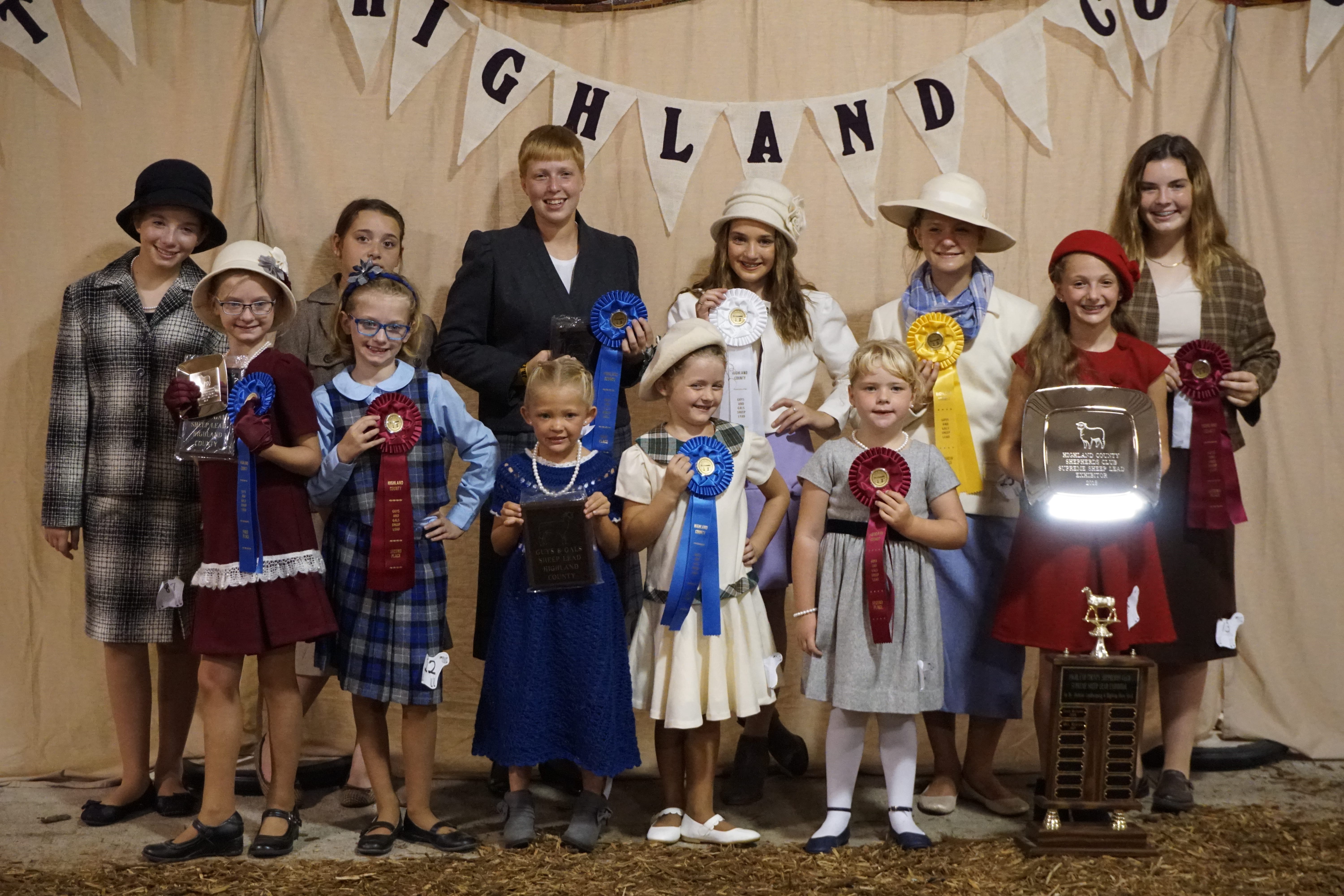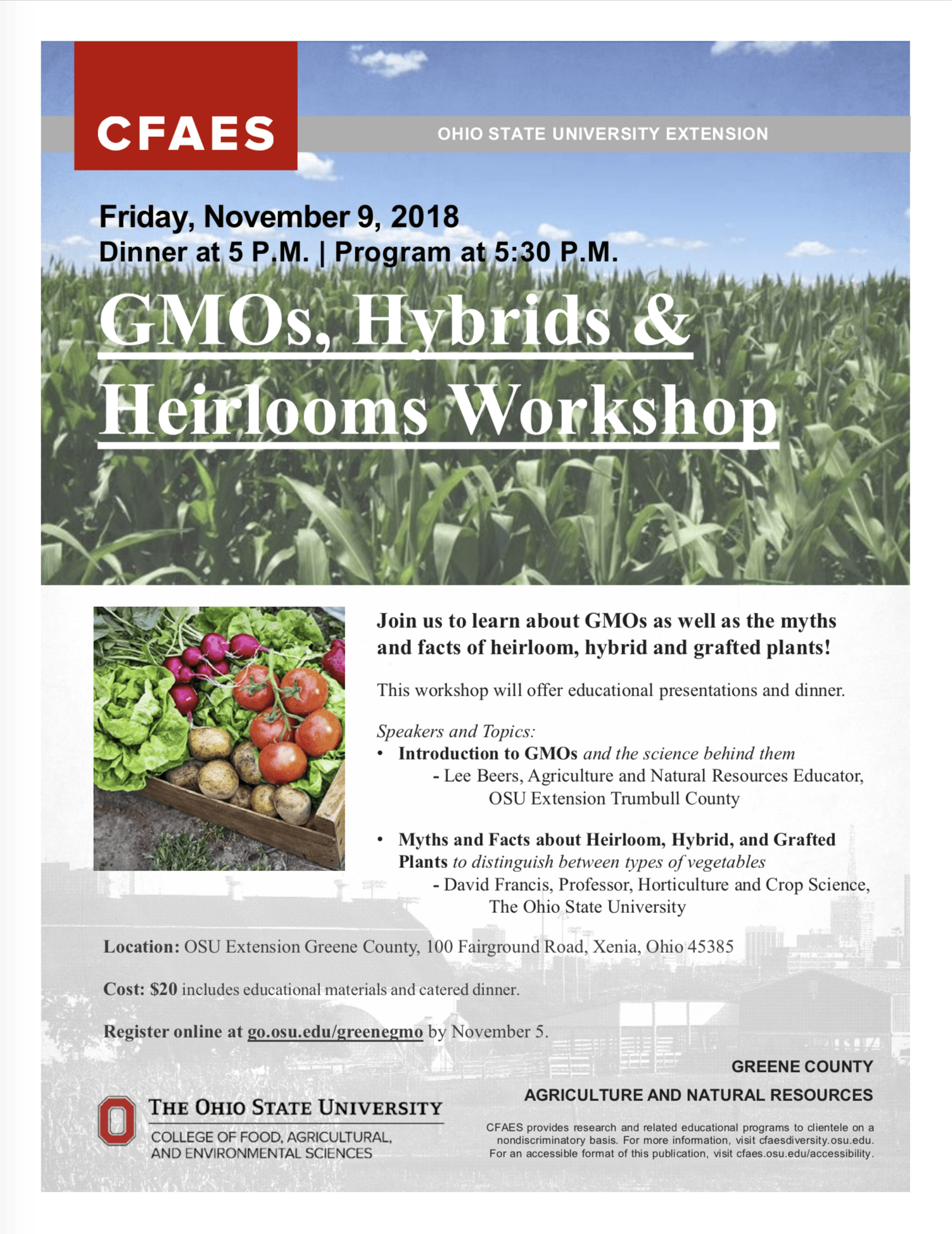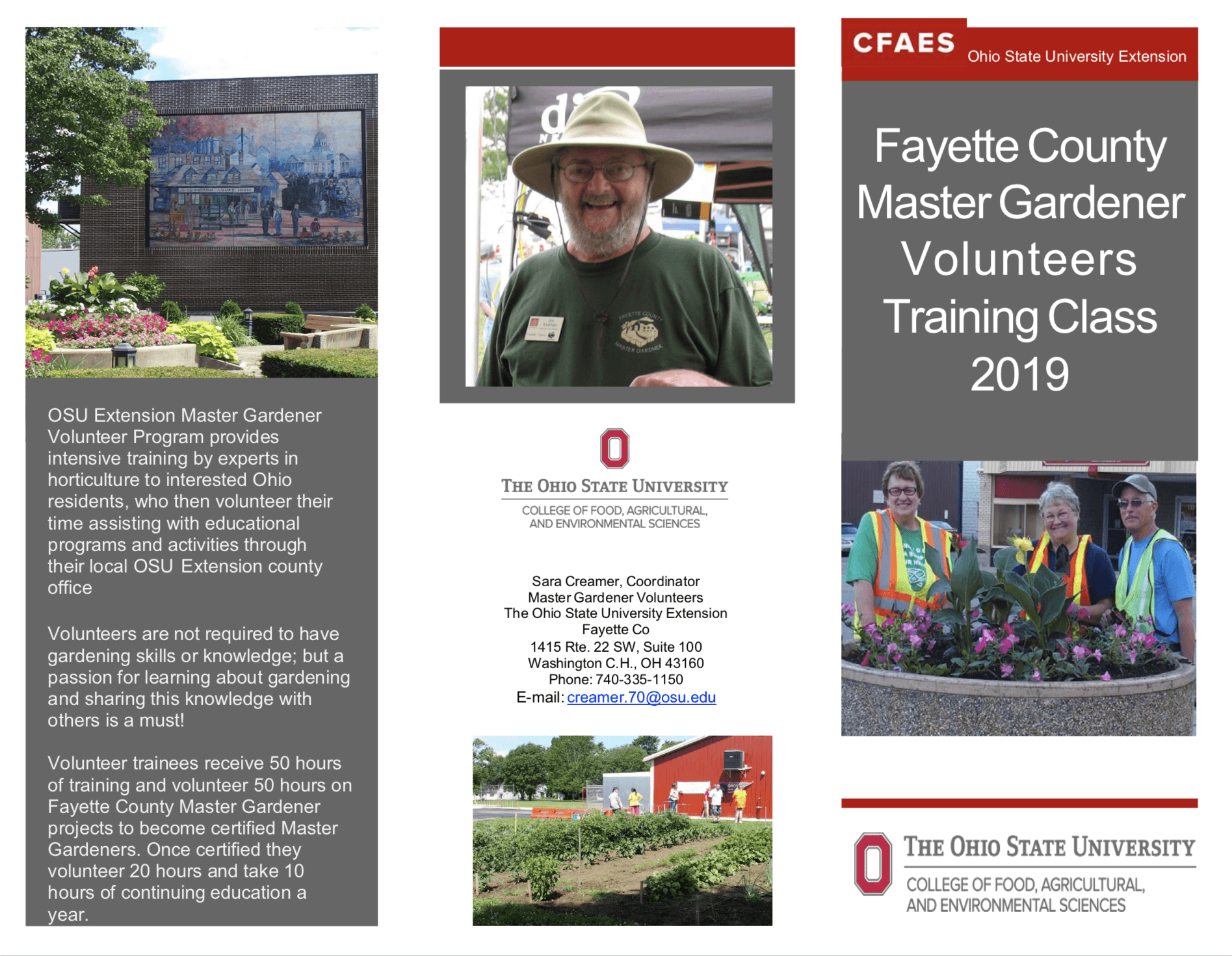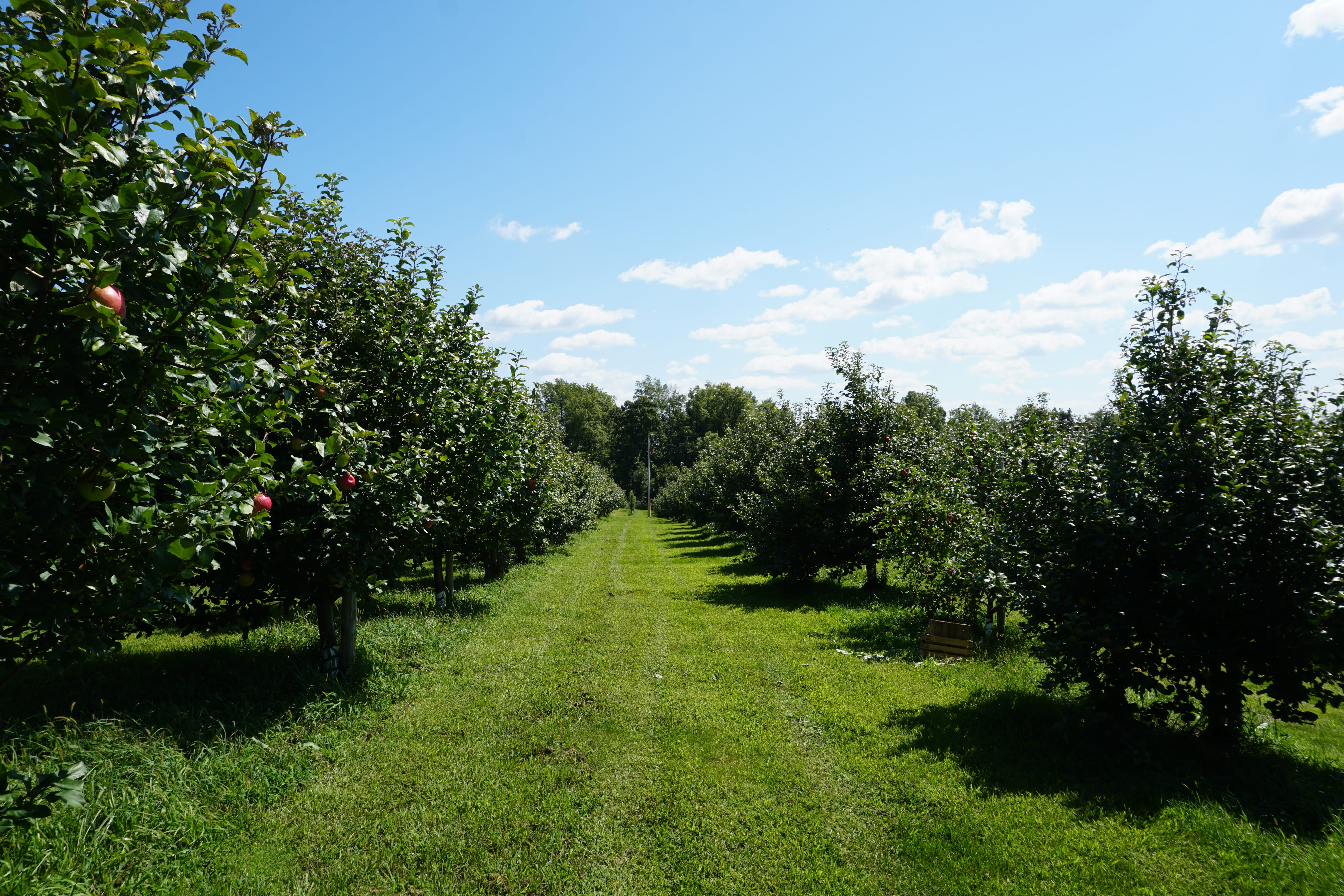The trailers for the on-farm research are ready to view! Check the Highland County Extension Facebook, Twitter, and Instagram for more of these trailers. The full videos will be available later this fall at https://agcrops.osu.edu/on-farm-research
Month: September 2018
American Bald Eagle in Highland County
Brooke Beam, PhD
Ohio State University Extension, Highland County
Agriculture and Natural Resources/Community Development Extension Educator
September 26, 2018
I enjoy the outdoors and watching animals in their natural habitat. On my commute to the Highland County Extension Office, I frequently see deer, turkeys, and a variety of birds. However, this week was different as I saw an American Bald Eagle near the Highland County and Clinton County line on OH 72. The bald eagle I saw was enjoying its breakfast of roadkill and was not in a photogenic mindset.
The bald eagle is an endangered species success story, as 40 years ago it was in danger of extinction, according to the U.S. Fish and Wildlife Service. However, the bald eagle was removed from the list of endangered species in 2007 due to an increase in its population. As of 2007, the U.S. Fish and Wildlife Service estimated the number of bald eagle breeding pairs in Ohio to be around 125. Bald eagles have been increasing in numbers due to the banning of DDT, protecting nests, prohibiting the killing of bald eagles, and improving water quality in lakes and rivers across the country.
While this was the first bald eagle I have seen, there have been other sightings of bald eagles in Highland County at Rocky Fork and Paint Creek State Parks. Nests of bald eagles in southwestern Ohio is something that has occurred due to the repopulation of the species.
The United States adopted the Great Seal of the United States 1782, which features a bald eagle. Since 1782, the bald eagle has been featured on many American symbols including our currency, federal seals, and military insignia. While we now recognize the bald eagle as a symbol of strength and freedom, there was a debate among the founding fathers on whether the bald eagle was a good representation of the country. According to the Smithsonian Magazine, Benjamin Franklin wrote a letter to his daughter questioning the choice of the bald eagle instead of a turkey as the National Bird.
Bald eagles are unique to North America. They like to live near bodies of water where they can find fish, waterfowl, and other small animals to consume. According to the U.S. Fish and Wildlife Service, their nests can reach up to 10 feet across and can weigh up to half a ton. The birds mate for life and can live for 15 to 25 years in the wild. Bald eagles gradually change from a mixture of brown and white feathers to having the iconic white head and tail once they reach maturity around five years of age. A bald eagle can weigh up to 14 pounds and have a wingspan of eight feet.
So, keep an eye on the sky this fall and you too may see the National Bird of the United States soaring over Highland County.
Upcoming Events:
- Thursday, October 25, 2018, 6:30 P.M., Producer Stockyards, Hillsboro, Ohio
Call your local Ohio State University Extension Office to register for the BQA training. The Highland County Extension Office can be reached at 937-393-1918.
“Fall Treasures in your Woodland: Fungi, Lichens and More” offered by A DAY in the WOODS – 2nd Friday Series partners at the Vinton Furnace State Forest on October 12
By David Apsley
October is a great time to be in the woods. Fall foliage is often at its peak, and there is much more to see. On the forest floor, mushrooms are often abundant and wildflowers including asters, goldenrods, and legumes are often still putting on a show.
October is a great time to be in the woods. Fall foliage is often at its peak, and there is much more to see. On the forest floor, mushrooms are often abundant and wildflowers including asters, goldenrods, and legumes are often still putting on a show. Numerous lichens, which are a symbiotic association between fungi and algae, are visible on tree trunks, branches, and rock outcroppings. Even dead and decaying logs can support many varieties of fungi, which play an important role in soil formation and nutrient cycling. Fall Treasures in your Woodland: Fungi, Lichens and More will help woodland owners and enthusiasts learn to identify and understand the contributions of these underappreciated organisms to the biodiversity of our forested ecosystems.
- Explore the forest in search of fungi, lichens, and other organisms that are present in the fall, such as late-blooming woodland wildflowers.
- Learn lichen identification and ecology from Ray Showman, author of The Macrolichens of Ohio.
- Join Homer Elliott, Hocking College, on a foray to see and identify fungi that inhabit the forest floor environment.
- Enjoy the fall woods, including the fall foliage and fall wildflowers.
The program starts at 9:00 AM and ends at 3:30 PM. A registration fee of $12 will cover the cost of lunch and program materials. Please RSVP by calling OSU Extension Vinton County at 740-596-5212, or email Dave Apsley at apsley.1@osu.edu by October 8.
“A DAY in the WOOD” and the “2nd Friday Series” are sponsored by the Education and Demonstration Subcommittee of the Vinton Furnace State Forest. The principal partners in this effort include Ohio State University Extension, ODNR-Divisions of Forestry and Wildlife, U.S. Forest Service, Vinton County Soil and Water Conservation District, National Wild Turkey Federation, Glatfelter, Ohio Tree Farm Committee, U.S. Fish and Wildlife Service, Hocking College, Central State University Extension, The Ohio Bird Conservation Initiative, the Ruffed Grouse Society, and Ohio’s SFI Implementation Committee.
Since 2012, “A DAY in the WOODS” has nearly 60 programs with approximately 2,250 participants attending. More than 100 natural resources professionals have presented these programs to woodland owners and enthusiast just like you. Be sure to mark your calendar so you are sure not to miss any of these great opportunities to spend A DAY in the WOODS:
GMOs, Hybrids & Heirlooms Workshop to be held in Greene County
Evaluate herbicide performance in your operation
By Tony Nye
Agricultural and Natural Resources Extension Educator
Ohio State University Extension, Clinton County
Originally published in the Wilmington News Journal
The dog days of summer seem to be hanging on with some of our hottest days recently.
I am not ready to let go. Fall, however, is my favorite time of year, with enjoyable temperatures, great fall colors — and let us not forget the fact that Buckeye football begins this weekend.
My only problem with fall is the fact that winter follows it.
In the meantime, I was reminded this week that we want to be diligent in our evaluation of weed control on our farms and in our fields.
Just this week I assisted the new educator in Highland County on a possible Palmer amaranth weed situation in CRP acreage.
As it turned out, there was Palmer amaranth, as well as water hemp, evidence of spiny amaranth and maybe other pigweed species (I did not walk entire acreage). This was a new seeding (spring 2018) and more than likely the problem weeds came with the seed.
Most of our seed for these types of situations can come from states that have a history of having Palmer amaranth and water hemp.
Reminder — ODA will test any seed used for these purposes for the presence of Palmer amaranth. There were not lots of plants so individual plant removal would be achievable without too much effort. If left to go to full seed production this year, next year could be a whole different story for the producer.
The concern as many of you are aware is Palmer amaranth is a noxious weed and can spread very quickly over crop acreage in just a matter of a couple years if neglected.
According to Mark Loux, Ohio State University weed specialist, as well as other weed specialists across the country, note that Palmer amaranth is an Amaranthus (pigweed) species that has become a devastating glyphosate-resistant weed problem in the South and parts of the Midwest over the past decade.
It has caused substantial losses in crop yield and farm income, and a permanent increase in the cost of herbicide programs.
If you don’t already have to deal with water hemp or Palmer amaranth, you don’t want it, warns Loux. Ask anyone who does.
Loux notes that neither one of these weeds is easy to manage, and both can cause substantial increases in the cost of herbicide programs, which have to be constantly changed to account for the multiple resistance that will develop over time (not “can”, “will”).
The trend across the country is for them to develop resistance to any new herbicide sites of action that are used in POST treatments. Preventing new infestations of these weeds should be of high priority for Ohio growers.
Preventing additional Palmer infestations in Ohio is a primary goal of the OSU weed science program, and will require efforts from the entire Ohio agricultural community. There are several mechanisms for the movement of Palmer amaranth into Ohio:
• Movement of equipment from Palmer-infested areas into Ohio.
• The presence of Palmer seed in cotton-derived feed products that are transported from the south into Ohio, or in hay from Kansas.
• The presence of Palmer seed in cover crop and wildlife seed that originates in areas infested with palmer amaranth, such as Texas and Kansas.
Below is a map of where Palmer Amaranth was identified as of 2017 and a few more locations have been found in 2018. If you notice, Clinton County is included in this map. This map is a moving target and can change at any given time as more populations are found in Ohio.
What makes Palmer amaranth such a problem:
• A single female Palmer plant produce 100,000 to upwards of 500,000 seed.
• Broad period of emergence — April to August.
• Small seed that is well-adapted to minimum and no-tillage.
• Rapid growth – up to 3 inches a day. Postemergence herbicides must be applied when Palmer plants are less than 3 inches tall.
• Readily develops herbicide resistance.
• Dioecious reproductive system (male and female plants). Obligate outcrossing results in rapid spread of herbicide resistance.
In a few words from Loux: When not controlled, Palmer amaranth in Ohio can take over a field faster than any other annual weed we deal with. Taking time to remove Palmer amaranth and waterhemp plants from fields now will go a long way toward maintaining the profitability of farm operation.
Certainly we have other problem weeds we should also be scouting for to evaluate the effectiveness of our herbicide program this time of year. Those would include giant ragweed, common ragweed, marestail, and don’t forget the likes of foxtail, lambsquarter and other weeds that are problems in your own situations.
With the cooler weather this weekend, take some time to note effectiveness and problems with herbicide performance in your cropping operation.
Tony Nye is the state coordinator for the Ohio State University Extension Small Farm Program and has been an OSU Extension Educator for agriculture and natural resources for 30 years, currently serving Clinton County and the Miami Valley EERA.
Retrieved from https://www.wnewsj.com/opinion/columns/81939/evaluate-herbicide-performance-in-your-operation
Fayette County Master Gardener Volunteers Training Class for 2019
Leadership Highland History Day

From left to right: Destiny Bryson, Mike Hart, Rob Holt, May Greene, Liz Brennfleck, Michelle Unsworth, Diana Grooms, and Harold Schmidt of the Greenfield Historical Society in front of the Konneker Education Museum in Greenfield, Ohio.
Brooke Beam, PhD
Ohio State University Extension, Highland County
Agriculture and Natural Resources/Community Development Extension Educator
September 19, 2018
The Leadership Highland class met on September 19, 2018, for Highland County history day. The participants began the day at the Greenfield Historical Society where Harold Schmidt and Tom Adams shared Greenfield’s history, model train display, and the Konneker Education Museum.

Tom Adams showing the model of Greenfield he constructed to the participants of Leadership Highland.
The second stop was the Parker House Hotel where participants met with Jack Hope. Mr. Hope shared a brief history of his background and many Highland County projects. A tour of the Parker House Hotel followed Mr. Hope’s presentation. Mayor Drew Hastings provided a tour of Bell’s Opera House and the history of the building. The final stop in Hillsboro was the Highland House. Carolyn Hastings, of the Highland County Historical Society, provided a tour of the building and a private viewing of The Lincoln School Story: A Battle for School Integration in Ohio documentary.
The Leadership Highland history day tour concluded in Lynchburg where Virginia Rhonemus and Elaine Williams provided a walking and driving tour of Lynchburg. A few of the historical sites visited included the covered bridge, the oldest home in Lynchburg, and the Lynchburg distillery site.

Connecting Highland and Clinton Counties, the covered bridge in Lynchburg is the only existing bridge in Ohio that connects two counties.
The next meeting of Leadership Highland will be agriculture day in October. For more information about Leadership Highland, contact Brooke Beam at the Highland County Extension Office at 937-393-1918.
Upcoming Events:
Beef Quality Assurance Training:
- Thursday, October 25, 2018, 6:30 P.M., Producer Stockyards, Hillsboro, Ohio
Call your local Ohio State University Extension Office to register for the BQA training. The Highland County Extension Office can be reached at 937-393-1918.
MarketReady Producer Training to be held in Brown County
Highlights of Highland County Agriculture Virtual Reality Video
For those of you who were unable to attend the Highland County fair, below you will find the virtual reality video that was shown. The video highlights several Highland County farms and a variety of agricultural production practices, as well as a prominent community event.
Special thanks to White Clover Farm, Karnes Orchard and Starlite Dairy for allowing their farms to be recorded for the project.
Dr. James Linnie owns and operates White Clover Farm, a grassfed beef operation located outside of Hillsboro, Ohio. Dr. Linnie started the farm in 2005 while he was working part-time as a gastroenterologist. Today, Dr. Linnie’s business consists of a herd of 100 percent grassfed beef that are rotated every few days to fresh pastures. The scene shown in the VR video is of Dr. Linnie moving his cattle from one section of the pasture to another. If you compare the two pastures in the video, you can clearly see the difference between which pasture the cattle have been grazing and the pasture they are going to be grazing. In fact, the cattle had only been gazing in the previous pasture for 24 hours.
The Karnes family has a history of having an orchard on their family farm since 1876. In March of 2012, the Karnes family replanted 2,200 fruit trees and in 2013 planted an additional 2,000 trees for a wider selection of fruits. Karnes Orchard now raises over 30 varieties of apples, pears, plums, peaches, and cherries. In addition to fresh fruits, fresh apple cider is available in the Karnes Orchard Market seasonally. The scene filmed in the VR video shows picking Honey Crisp apples in the orchard as well as the washing, sizing, and packaging process.
Starlite Dairy is owned and operated by Tom and Janet Shawhan near Marshall, Ohio. At Starlite Dairy, the cows are milked twice a day. During optimal weather conditions, a cow can produce an average of 80 pounds of milk a day. The milking parlor at Starlite Dairy holds 16 cows at a time and it takes between 6 to 8 minutes to complete the milking process.
Highland County Sheep Lead

Back row: Grace Matthews, Brenna Wright, Lana Grover, Emma Yochum, Kallie Posey, and Sara Newsome.
Front row: Emelia Roehm, Evelyn Roehm, Kinlee Case, Eloise Roehm, Ella Brown, and Katie Cook
Brooke Beam, PhD
Ohio State University Extension, Highland County
Agriculture and Natural Resources/Community Development Extension Educator
September 12, 2018
I want to congratulate all of the participants of the Highland County Fair. I had the pleasure of viewing many of the livestock shows and assisting with the junior fair sales. I was impressed with the professionalism and courtesy the participants showed their peers and the judges. In particular, the sheep lead sticks out in my mind because I was a multi-year participant as a youth in this contest. I participated in the sheep lead at the county, state, and national level for over ten years. Without fail, every time I participated the temperature would be the hottest of the fair, which for the sheep lead really means something.
In typical sheep lead fashion, the Highland County Sheep Lead occurred on one of the hottest days of the Fair when the high was 91°F. Why is the heat important to consider when considering the sheep lead, you ask? It is important because all of the participants must wear predominantly wool apparel for the contest.
The sheep lead is unique in the sense that it combines both a livestock and fashion show together to highlight the sheep industry. Each participant must model their outfit and show their sheep while maintaining poise and grace. Lambs must be breeding sheep or market lambs that are trained to be shown by a halter. The combination of livestock and fashion is a treat for many spectators.
The sheep industry in the United States changed after World War II. Synthetic fibers replaced the use of wool in many instances and caused a shift in the market for lambs to be driven by meat production. According to the USDA, there were only 150,000 sheep in Ohio in 2003, which was a decrease of over 50 percent of the sheep population in Ohio from 1975. Although at the Highland County Fair Sheep Lead this year there were several first-year participants in the contest.
While the sheep industry has declined in size, there are opportunities for individuals to become involved in the sheep industry. The Southeast Ohio Sheep and Goat School covers a multitude of topics for beginning and experienced herdsmen, ranging from parasites to reproduction. For more information about the Southeast Ohio Sheep and Goat School contact Christine Gelley at gelley.2@osu.eduor 740-732-5681. Another opportunity is the Ohio Statewide Sheep Shearing School being held on Friday and Saturday, September 14-15 at the Dave Cable Farm (10491 Canal Road, Hebron, OH 43025). For more information about the Ohio Statewide Sheep Shearing School contact Roger High at 614-246-8299.
If you are interested in participating in next year’s sheep lead, the contest is open to all ages. For more information about the 2019 Highland County Fair Sheep Lead Contest contact Diane Keltner.
Upcoming Events:
Beef Quality Assurance Trainings:
- Thursday, September 13, 2018, 6:30 P.M., Producers Stockyards, Hillsboro
- Thursday, October 25, 2018, 6:30 P.M., Producers Stockyards, Hillsboro
Call your local Ohio State University Extension Office to register for the date and location of the BQA training of your choice. The Highland County Extension Office can be reached at 937-393-1918.
Tickets for the 2018 Farm Science Review are now available at the Highland County Extension Office. Tickets purchased at the Highland County Extension Office are $7, tickets will be $10 at the gate. Children 5 and under are free.










